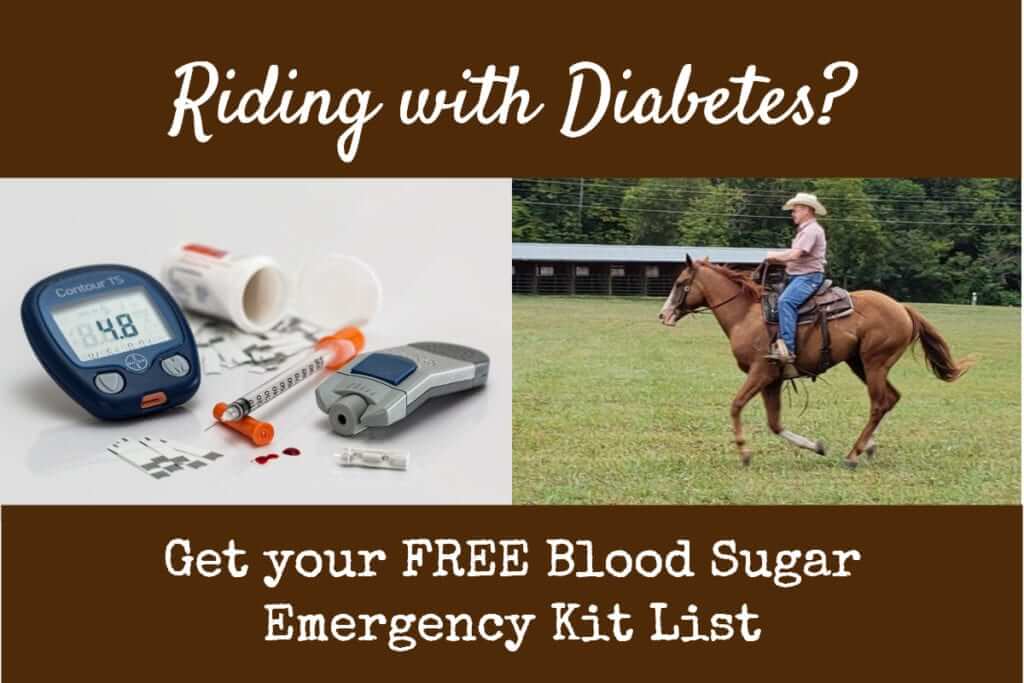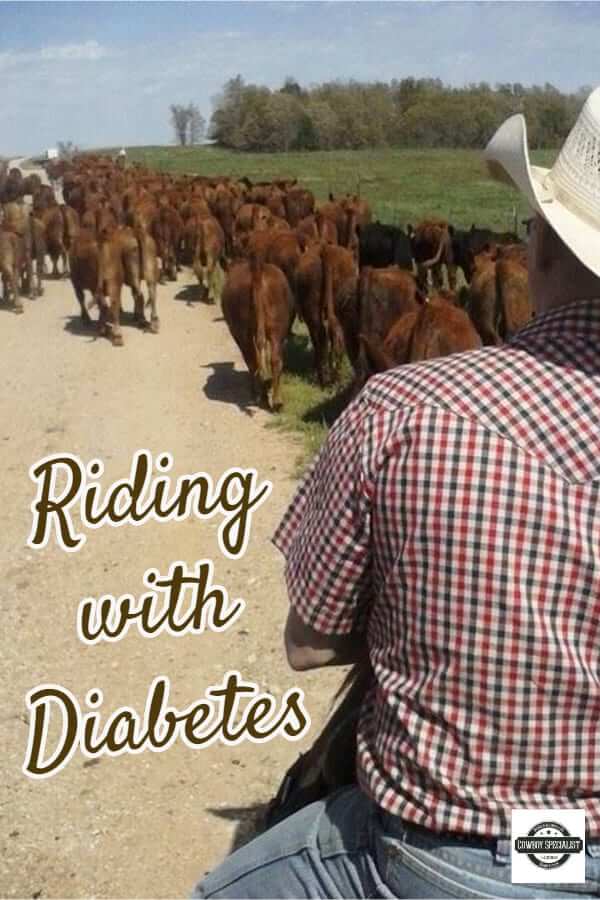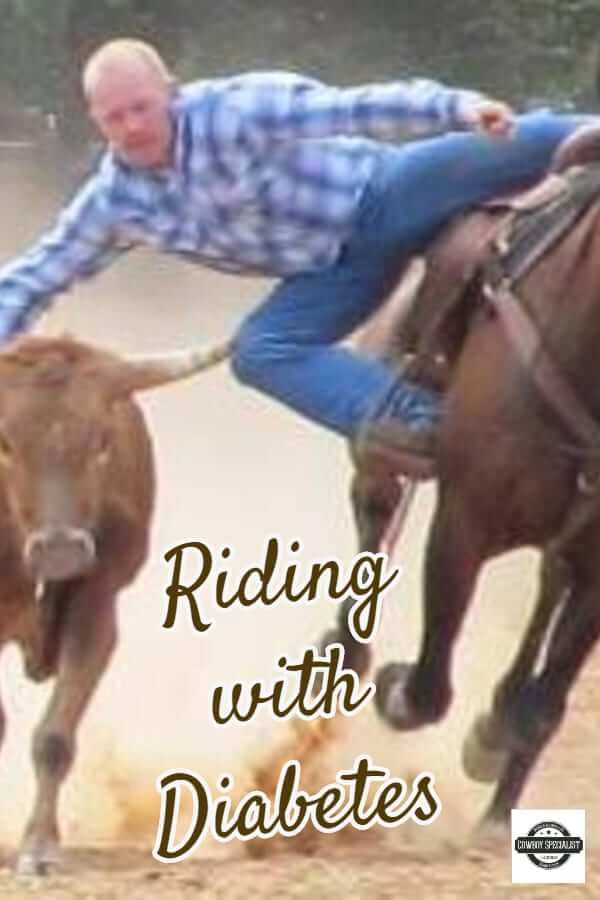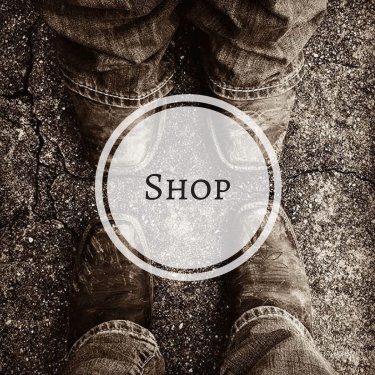Do you deal with the effects of diabetes in your daily life? Do you love horses and love riding? Here are our quick tips for riding with Diabetes. We hope it serves you well.
Trail riding with Diabetes
First of all, whether you have diabetes or not, things are more likely to go wrong if you don’t plan ahead. So, we are going to talk about how to plan ahead so nothing really can go wrong.
What kind of ride are you going on? Maybe its a short ride or maybe a long ride or a full day ride. This will determine how you will plan ahead, and for this post we will talk about planning for a long ride for sure. You can adjust for a shorter ride or all day ride from there.
Also, no person with diabetes is the same, just something to keep in mind. Just like there is Type 1 and Type 2, no Type 1 person is the exact same as another Type 1 person. You also have to know yourself. But one thing is for sure. Planning ahead is always a good idea.



Some of the links below are affiliate links for your convenience (which means if you make a purchase after clicking a link I will earn a small commission which helps keep my blog up and running but it won’t cost you a penny more)! Click here to read my full disclosure policy.
How To Plan For Riding with Diabetes
Check Your Blood Sugar
The number one pre-plan is to check your blood sugar and make sure it is good before you start your ride. Unfortunately, low blood sugar can effect your ability to think, while high blood sugar can make you feel bad and make you more thirsty than usual. And we want you able to enjoy every moment you are in the saddle.
Blood Sugar Riding Emergency Kit List
Second, pack an sugar emergency kit. We have made a list of things to go in your saddle bag to ensure you will have everything you need in case of a sugar hiccup.
- Sugar Snack: In case your sugar gets low it is nice to have a quick snack (ex. honey bun, candy bar, sugar tablets or cubes.) We suggest the honey bun on hot days due to the fact that it won’t melt like chocolate.
- Sugar Drink: In case your sugar gets low a drink might also be helpful, beside the snack option or possible with it. You know your body best and can determine what you will need.
- Protein Snack: After having the sugar we don’t want your levels to bottom out so a good protein snack to level things off is always a good follow up choice. (ex. beef jerky, cheese stick, nuts)
- Water…this is good for everyone. The number one issue with people is generally not enough water consumption. So lets stay hydrated.
- Cell Phone: Just in case we need to get help or we get lost. You can make a call or use it as a map. It is just a great idea to throw it in the saddle bag too. If you don’t want to be bothered and enjoy the ride, put it on silent and don’t look at unless you need it.
- Glucose Monitoring System: However you monitor your glucose, its a great idea to bring your system along. That way you know if you need the stuff you have packed in your SEK (Sugar Emergency Kit).
- Insulin & Syringes: Just in case you need to take a dose on the trail or if you end up out on the trail longer than you planned you have everything you need to stay healthy.
Long and New Ride Areas
- If you are planning to go on day rides or rides in country you have never been in you might want to add in a emergency flare and slip on your diabetic id jewelry.
- Glucose Shot: If you have some you might want to add your emergency glucose shots.
- If you are riding alone, make sure someone knows where you will be riding and what time you expect to be home.
Eat Before You Go
Lastly, it is a great idea to eat before you go. That way you have already set yourself up for success for your ride that day. And most things will be taken care of before you head out.
New Technologies
Here are some things you might want to consider as well. In the last year my brother in-law (type I diabetic) started using the Omnipod (the pump) for continual and regulated insulin injections. It has been very effective for him and several of his rodeo family are using it as well. Just something to consider (he still carries syringes in case the pump malfunctions and snacks, however he doesn’t need them nearly as often as he used to.)
The glucose monitoring system is also a wonderful tool because you can see your sugar starting to get low or starting to get high before you feel the actual symptoms. Dexatrom is the one he has been happiest with, as he wears it just like the pump. Therefore, you can treat yourself and keep your sugars more level all the time.



Riding with Diabetes: His Story
Shawn Liggett, my brother in-law, is a horse trainer, chief happiness officer, lover of dogs and kids, nemesis of nephews and type I diabetic. He was diagnosed with diabetes at the young age of 12, about the time he started riding horses. He has competed in steer wrestling, team ropings and worked reining horses professionally. Shawn has worked for Craig Cameron and Al Dunning working and training horses as well.
One thing is for sure, he has not let the diabetes diagnosis dictate his life. But, he has rather enjoyed the gift God gave him to work with horses. He has enjoyed his many rides, while he continues to ride…LIVING his life with diabetes.
Conclusion
With peace of mind and strategic planning, you can just simply enjoy the ride. Happy Riding Ya’ll!
PS If you have any tips you would like to share please comment below. If you have questions for Shawn about riding with diabetes please message us at: [email protected] Attn: Shawn in the title.
If you loved this post you might also be interested in:
6 Reasons to Ride Along the River



 CLICK HERE TO SEE OUR SECRET HOLIDAY SALES
CLICK HERE TO SEE OUR SECRET HOLIDAY SALES 




